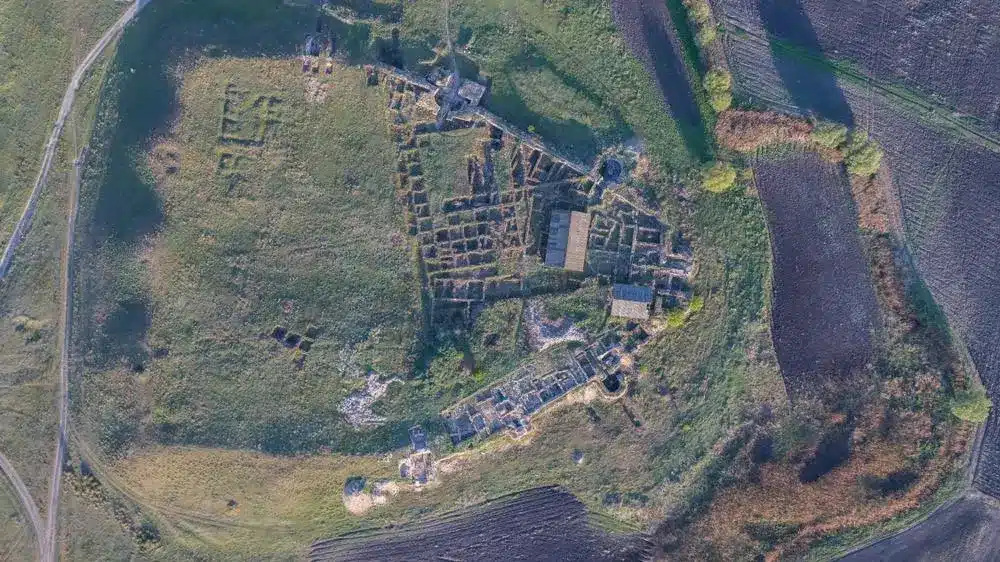Cuprins
The Dobrogea area is dotted with Roman castles and vestiges, which are more or less exploited for tourism. In this article you will discover interesting information and stories about the Halmyris Fortress – the Roman remains near the Danube!
● The history of the archaeological site of Halmyris
● The unique features of Halmyris
● What else you can do in the area
History of the archaeological site of Halmyris
The history of the archaeological site of Halmyris, in the commune of Murighiol, Tulcea county, is linked to the presence of an important Roman fleet.
Prior to the Roman sailors who arrived and settled here, archaeological evidence points to the existence of a Getic necropolis. Halmyris was therefore populated before the Romans arrived. The name Halmyris is given by the Greeks who lived here in the area of Pontus Euxinus, the ancient name for the Black Sea, which at that time was only 3 km from the city of Halmyris!
At present, the archaeological site of Halmyris is in a long process of research. The first archaeological works started in the 1980s, and the state of archaeological work is said to be only 20-30% complete. At the same time, there is also a plan to restore the site in order to valorize it and put it on the list of tourist attractions of Dobrogea.
Next, we invite you to discover the special features of Halmyris.
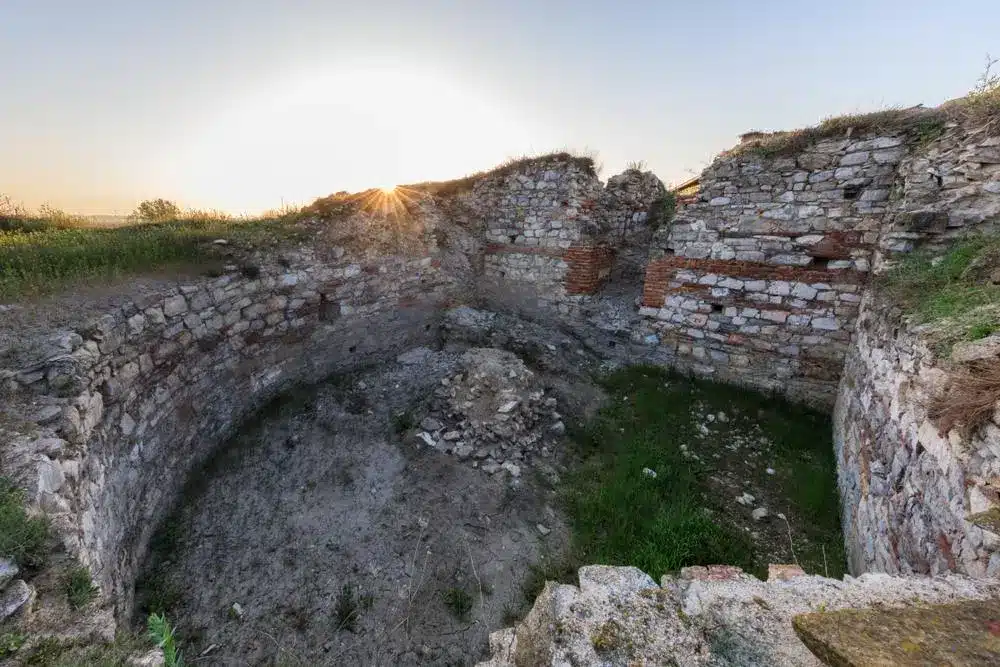
The ruins of Halmyris
The unique features of Halmyris
The peculiarities of Halmyris are, as you’ll soon find out, as interesting as they can be for the history of our country. All in all, it’s worth knowing before taking a walk back in time to Roman-Byzantine times.
Where Halmyris Fortress is located
Halmyris Fortress is located between the village of Murighiol and the village of Dunavățu de Sus, in the commune of Murighiol, Tulcea County. From whichever side you start from, the distance is approximately equal between the two villages. Halmyris can be reached by road, on county road 229L.
Roman vestige between two lakes
At present, the Citadel of Halmyris is located next to two seasonal lakes, Rotundu Mic and Rotundu Mare. The Danube River is also 2 km from Halmyris. The St. George’s Arm.
In ancient times, there were two salt lakes here that would have formed a bay. The name of Murighiol’s “Sărătura” is linked to these ancient hydrographic areas.
Let’s talk a bit about the hills around Halmyris. Roman sailors would also have built a civilian settlement in the area: the village of the Corsairs or Vicus Classicorum. The settlement was located in the south-eastern part of the fortress, on the Danube Hills. Nowadays, the county road separates the village of the Corrabiers from the Citadel of Halmyris. Unfortunately, due to lack of funds, although there are sufficient clues, the area has not yet been excavated for the discovery of the ancient Roman dwellings.
Halmyris, fortress-port with defense towers
In ancient times, the Danube flowed right next to the city of Halmyris, so it also had the status of a port city.
The fortress of Halmyris, called Salmourus by the Romans in reference to the saltwater lakes next to it, had an important strategic position, and the Romans capitalized on this. In other words, at the beginning of the 2nd century AD, it was here that a sizeable Roman Danubian fleet, the Classis Flavia Moesica, was operating.
Originally, the shape of the fortress was rectangular, with four entrances, one for each cardinal point. The Romans developed the fortress, which came to look like a shield, with elongated sides and a ‘spire’ facing the Danube. It is believed that the fortress had no less than 14 defense towers, mostly in the form of mounds, which were located outside around the fortress. Inside there were 6 towers used to store food and ammunition. Apparently not all of them were completed. At the same time, the imposing building in the center of the fortress was most probably the commander’s residence.
The northern gate of the fortress provided access from the Danube. Thus, until the Danube silted up, it was configured as a pedestrian access area where soldiers carried supplies from the ships.
The fortress of Halmyris had other roles besides military. For example, it was a center of pottery production, one of the largest in Dobrogea.
The last inhabitants of the city, between the 4th and 7th centuries AD, were the Byzantines. They also reverted to the old name of the place, Halmyris.
👉 There’s no doubt that with boat trips you can admire the spectacle of nature in the Danube Delta. There are water adventures for everyone, depending on duration and preferences.
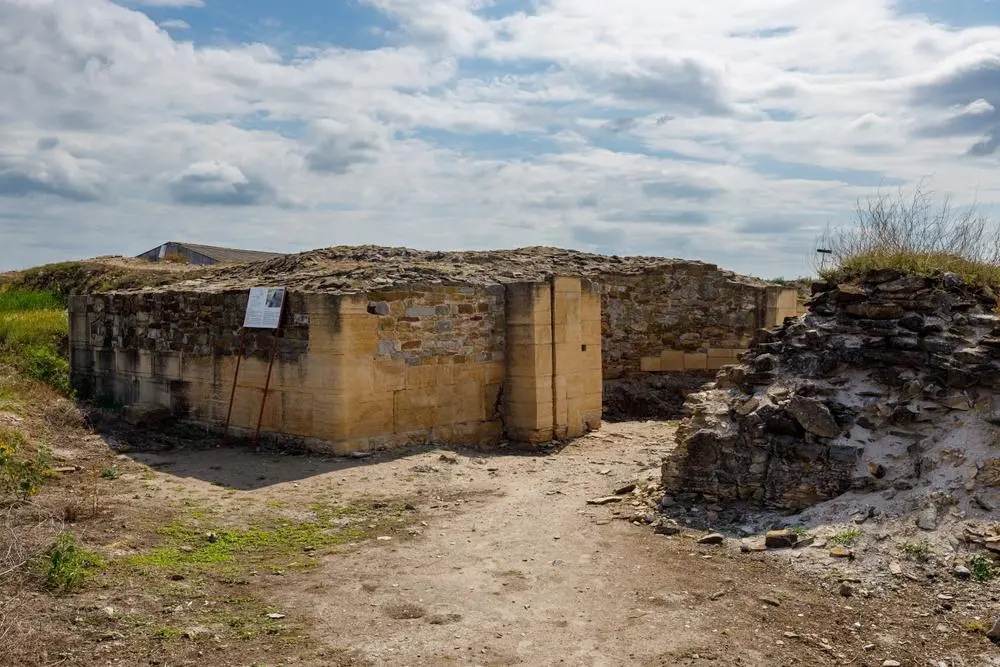
Halmyris fortress structure
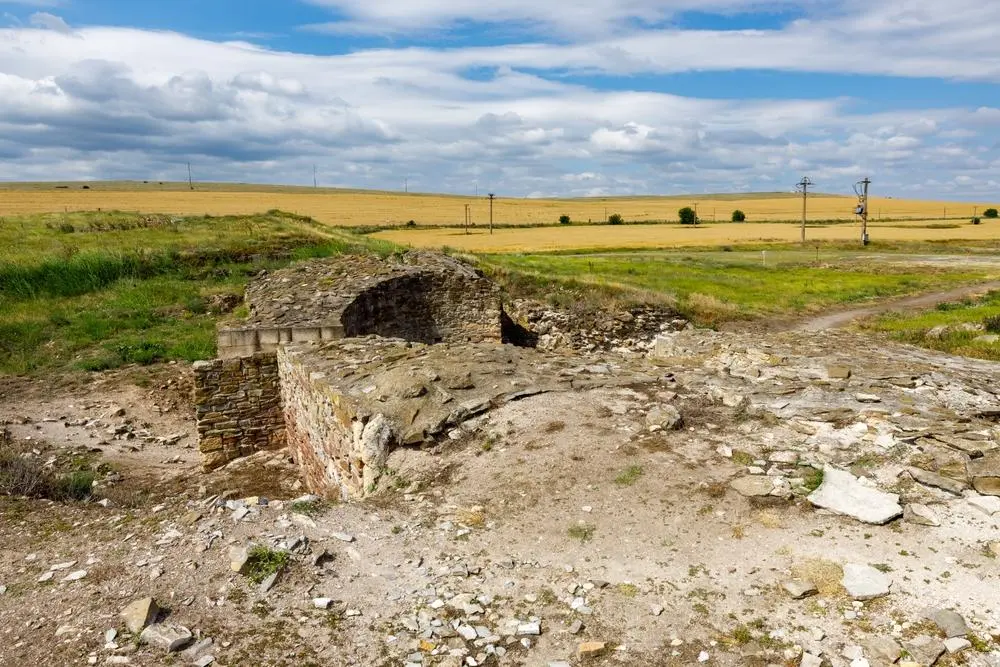
Entrance gate - former basin used as a baptismal font by the Byzantines
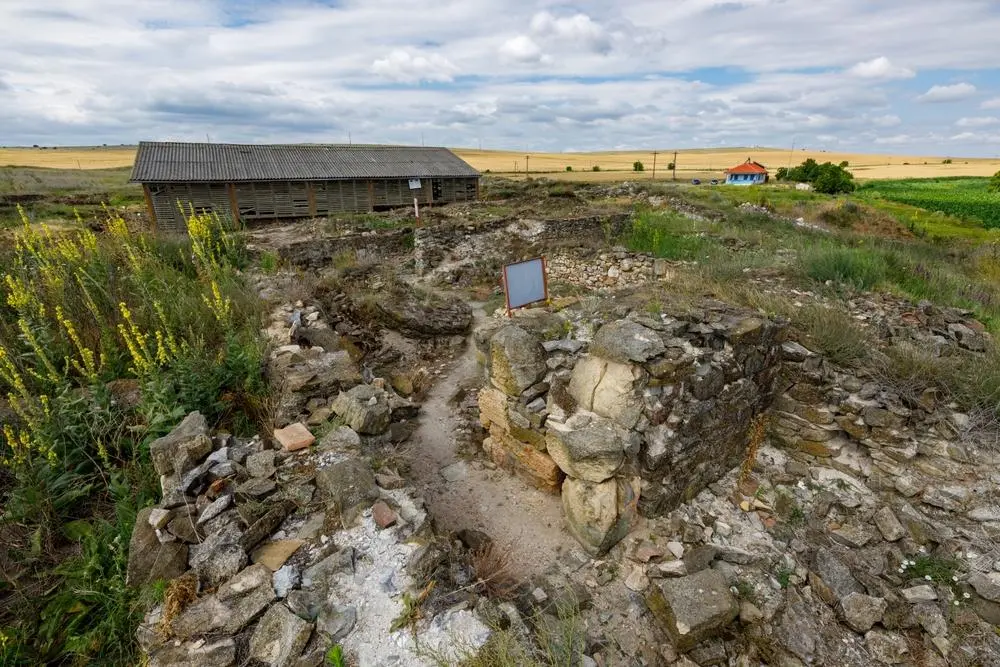
Inside Halmyris
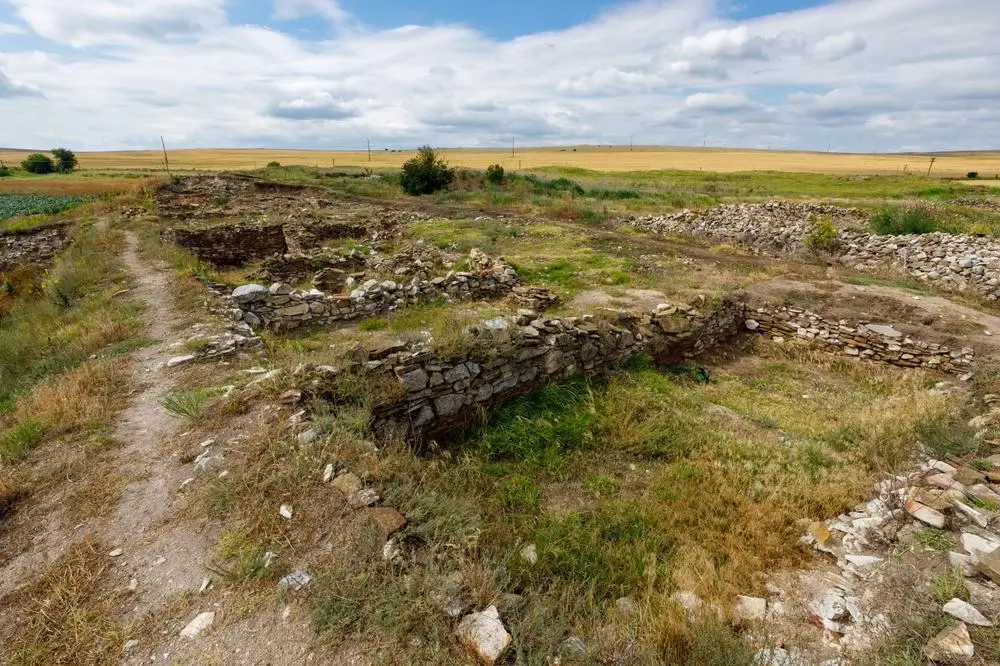
Halmyris archaeological site
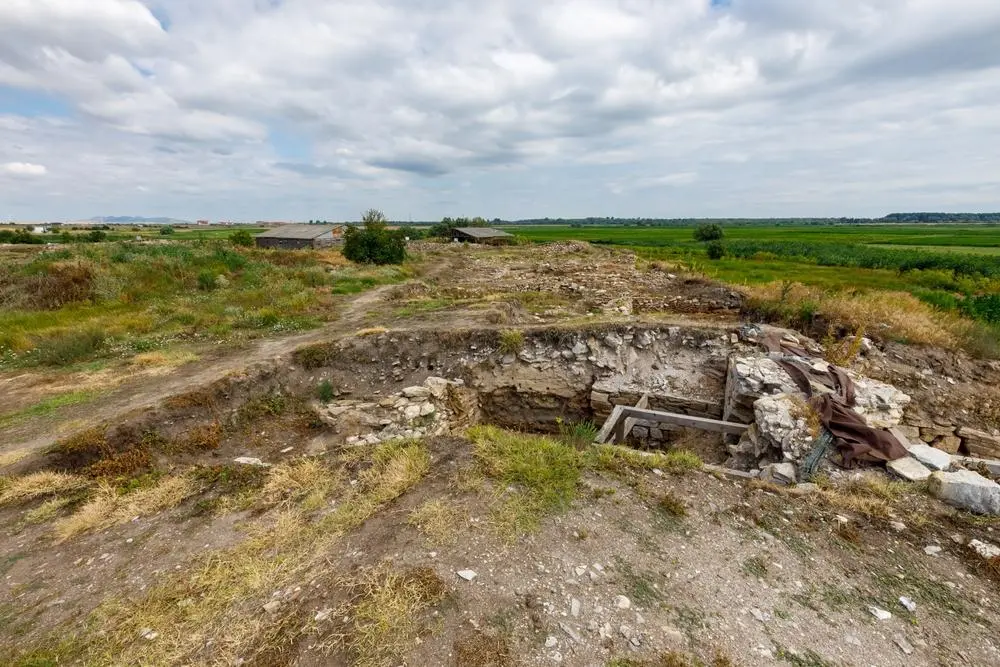
Archaeological excavations Halmyris
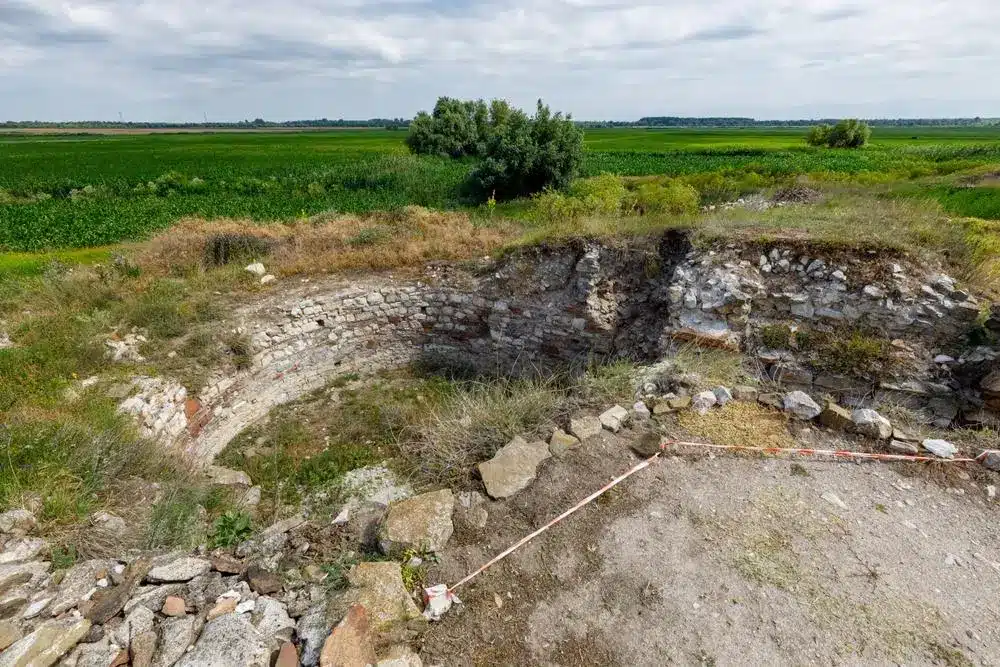
Halmyris fortress ruins
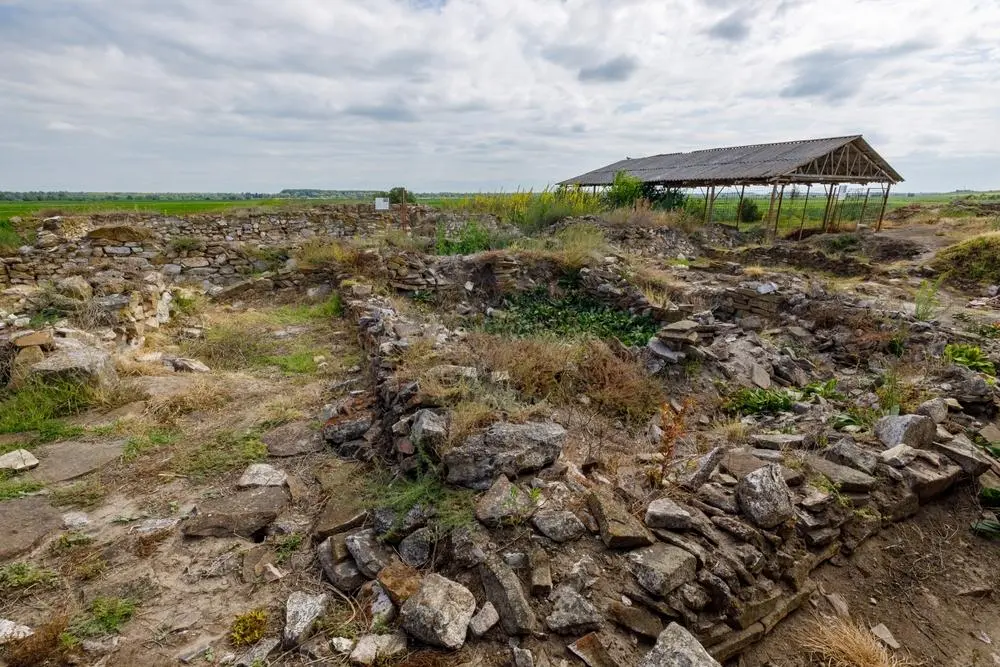
Roman soldiers barracks
Soldiers’ barracks
Garrisons of Roman soldiers were established in barrack-like structures. There are four such structures organized on the western side of the enclosure wall of Halmyris. They were built on foundations that apparently belonged to older structures, and the construction itself was made of stone and bricks. A typical Roman building technique was used.
Roman Baths
Baths were a social activity for the Romans, so they are not missing from the citadel of Halmyris. Although discovered late, after the 1980s, the Roman baths have been well preserved. Unlike other places, where there were thermal springs, here the Romans had to heat the water.
There are three basins: a “tepidarium” (the basin with the heating stove), a “caldarium” (the water basin where they used to bathe) and a “frigidarium” (the cold water basin shared with the sauna).
Episcopal Basilica
In 2001, the ruins of a Christian basilica were revealed. The basilica was built sometime in the 4th century, after the Byzantine Empire was Christianized. In fact, at the entrance to the citadel, somewhere on the left side, the Byzantines designed a kind of basin used as a baptismal font for the baptism of Christianity.
Beneath the altar of this religious shrine was a locked crypt, inside which the relics of two Christian martyrs, the priest Epictetus and the monarch Astion, were discovered, two very important martyrs who spread Christianity to this part of the Danube.
In recognition, the construction of Halmyris Monastery has begun. It is intended to be the largest cathedral in Dobrogea, with two patron saints: Saints Martyrs Epictetus and Astion – July 8 – and Saints Montanus and Maxima – March 26.
Inside are the relics of the relics of the two martyrs discovered here, having the status of the oldest holy relics in our country!
Visiting Halmyris
Halmyris can be visited for a fee from Tuesday to Sunday between 10am and 6pm.
According to ICEM – “Gavrilă Simion” Institute of Eco-Museum Research “Gavrilă Simion” in Tulcea – the price of a ticket is 6 lei/adult, 3 lei/preschool, school, student or pensioner.
As the fortress is not in a very good state of preservation, with signs of decay and fallen stones, you need to tread carefully on the tourist trails inside it.
Don’t miss the Halmyris Citadel Museum, where you can see ancient jars, amphorae, tombstones and other artifacts discovered at the archaeological site.
👉 We suggest enjoying nature at your own pace. Whether on water or on land, discover the experiences of the Danube Delta!
What else to do in the area
In addition to visiting the Halmyris archaeological site, you can also do some other interesting activities, depending on your preferences. For this it is ideal to have a car with which you can quickly cover the road distances connecting the main sights and tourist attractions of this area of Dobrogea. Here are some recommendations of places to consider:
Murighiol
The village of Murighiol, located just over 3 km from Halmyris, has a direct access to the natural paradise of the Danube Delta.
Here there are some very nice places where you can spend the night or have a traditional fish lunch. But if you don’t have much time, you can take a stroll along the Murighiol cliff overlooking the Murighiol lake. If time permits, you can discover the Danube Delta by boat.
St. Gheorghe
From Murighiol you can reach Sf. Gheorghe. The distance is covered by fast boats and takes about 50 minutes.
In Sf. Gheorghe you can enjoy a wild beach, nature reserves with unique flora and fauna, the gastronomy of the Haholeas and the possibility to make excursions to other special places in the Delta, such as the Caraorman forest or the village of Crișan.
👉 Your accommodation is at Dolphin Camping. You can choose a cottage with everything you need or an outdoor campsite!
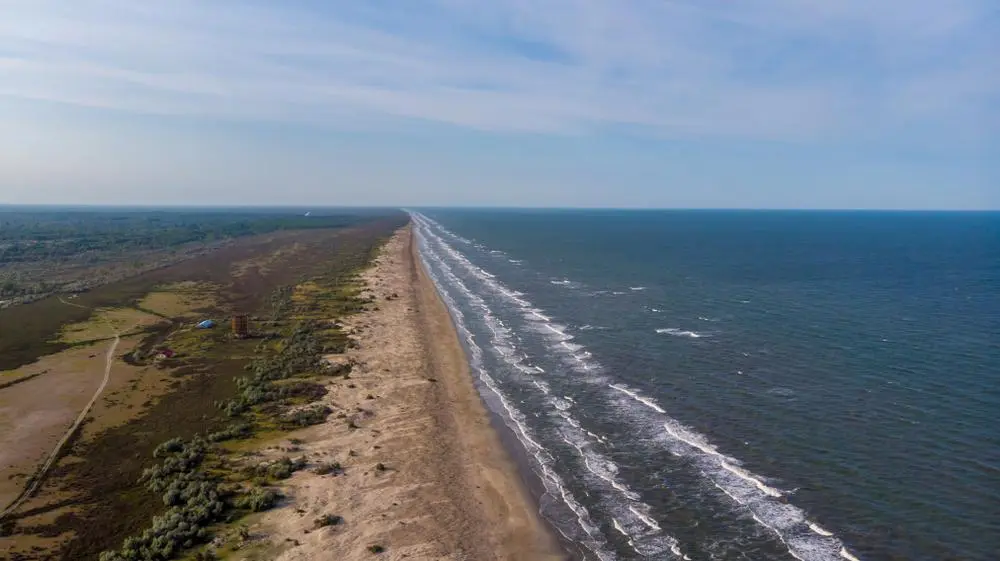
St. Gheorghe wild beach
Tulcea
Coming back to the roads, from Halmyris to Tulcea is about 50 km of driving. The road is along fishing villages that are bordered by the Danube Delta paradise of the Sf. Gheorghe Arm.
Tulcea is an ancient city, developed on an attractive hilly relief. You will therefore notice the ups and downs that characterize the “city of the 7 hills”. The most important sights are the Danube Waterfront, the Danube Delta Eco-Touristic Museum Center, the Independence Monument, the Ciuperca Park and Lake or the Traditional Fishing Village of Tulcea, just outside the city.
👉 Traveling to or from the airport? Simplify your trip and rent a car at great prices.
Sarichioi – Razim Lake – Popina Island
Another interesting route would be to the traditional fishing village of Sarichioi.
From Agighiol, which also leads to Tulcea, you can follow this route. On the way to Sarichioi you can see the huge Razim Lake and Popina Island – Romania’s only rocky island, which can only be visited for scientific purposes.
In Sarichioi, take a stroll through the village harbor and discover the Lipovenetian houses and gilded church domes.
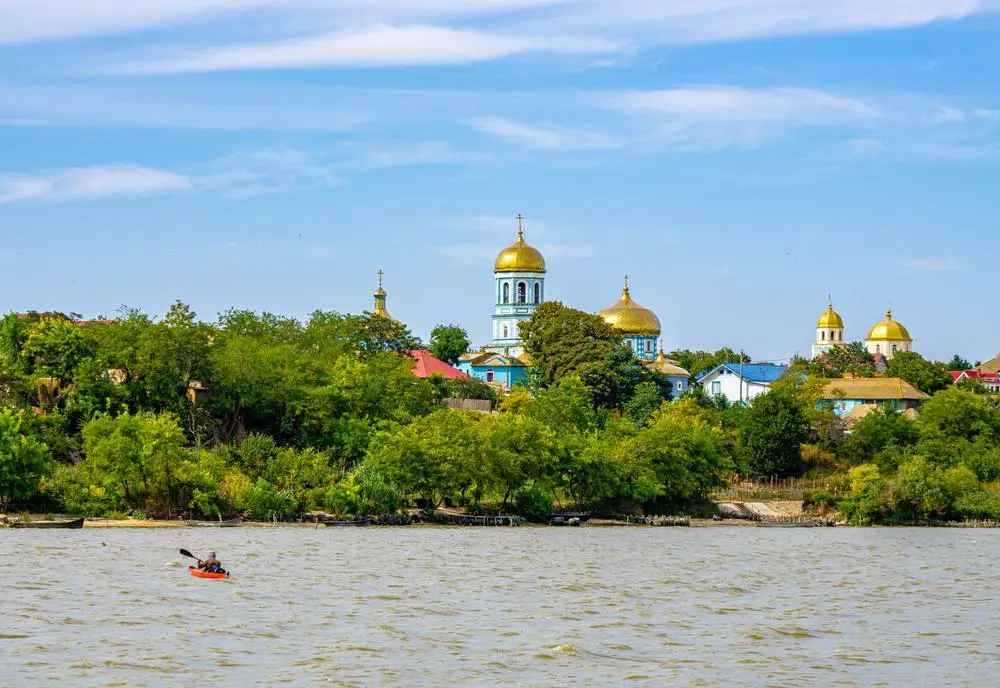
Sarichioi on Lake Razim
Enisala Fortress
Last but not least, you can pay a visit to Enisala Fortress – the best preserved fortress in Dobrogea.
It’s close to Sarichioi, 10 km away, so it’s worth driving a little further to see the beautiful views. Enisala Fortress has Genoese origins, with a main arched tower rising picturesquely into the sky.
All in all, the fortress of Halmyris hides many interesting stories and information, perhaps unexpected at first sight. Put it on your bucket list and explore it with other beautiful places in the Dobrogea region!
Photo sources: Shutterstock, Shutterstock, Shutterstock, Shutterstock, Shutterstock, Shutterstock, Shutterstock, Shutterstock, Shutterstock, Shutterstock, Shutterstock

